MXA MOTOCROSS RACE TEST: 2018 YAMAHA YZ250 TWO-STROKE
 THE GEAR: Jersey: FXR Clutch Retro, Pants: FXR Clutch Retro, Helmet: Shoei VFX-W, Goggles: EKS-S, Boots: Alpinestars Tech 7.
THE GEAR: Jersey: FXR Clutch Retro, Pants: FXR Clutch Retro, Helmet: Shoei VFX-W, Goggles: EKS-S, Boots: Alpinestars Tech 7.
Q: FIRST AND FOREMOST, IS THE 2018 YAMAHA YZ250 BETTER THAN THE 2017 YZ250?
A: From a mechanical standpoint, no. But, if you are into blue rims, then yes.
Q: WHAT CHANGES HAVE BEEN MADE TO THE 2018 YAMAHA YZ250?
A: Yamaha changed the silver rims to black in 2016 and the black rims to blue for 2018. Of course, we can’t forget the BNG. In short, the YZ250 powerplant and rolling chassis are unchanged for 2018 (and largely unchanged since vice president Dick Cheney shot his buddy with a shotgun on a hunting trip back in 2006).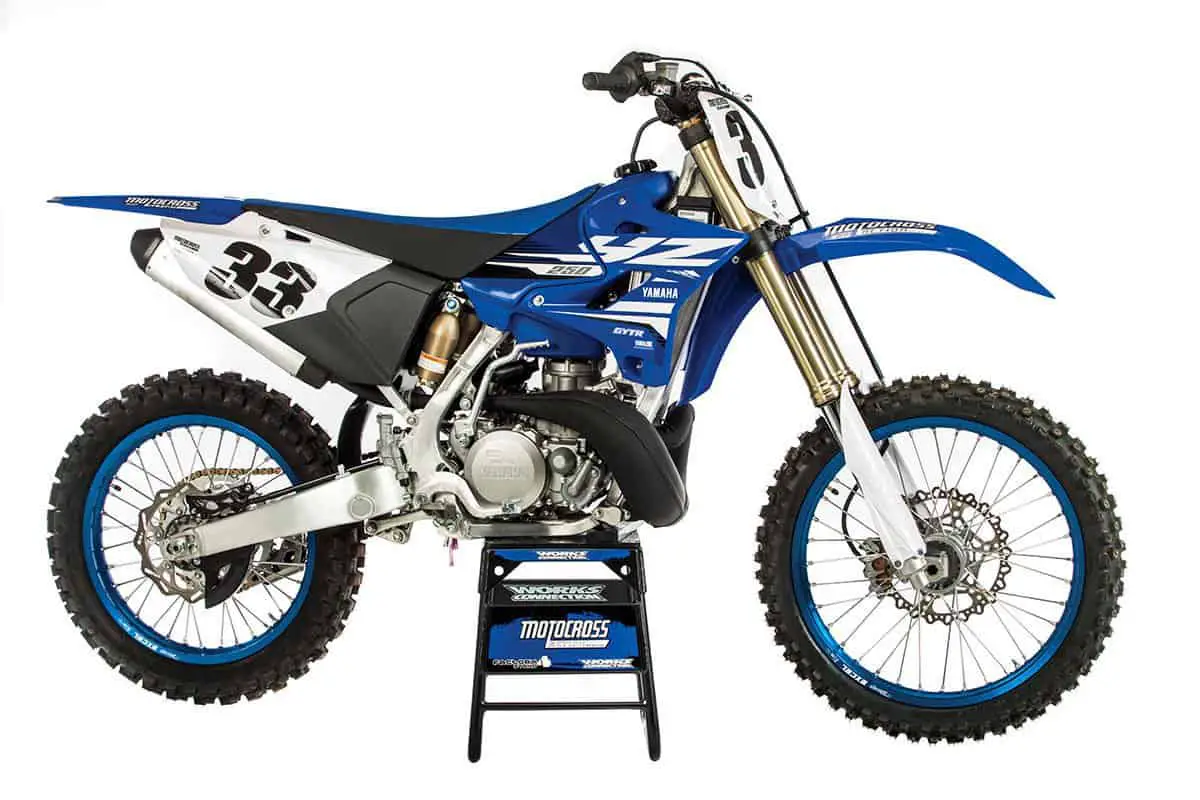 The most amazing fact about the 2018 Yamaha YZ250 is that it is a 12-year-old machine that is still competitive long after its 2006 stablemates have faded into obscurity.
The most amazing fact about the 2018 Yamaha YZ250 is that it is a 12-year-old machine that is still competitive long after its 2006 stablemates have faded into obscurity.
Q: WHAT HAS YAMAHA CHANGED ON THE YZ250 OVER THE LAST 12 YEARS?
A: We forgive you if you think that the YZ250 has been unchanged for the past 12 years, but that is closer to accurate than thinking that Yamaha has spent much in the way of R&D money on the YZ250 over the last 4,380 days. Still, we would be remiss if we didn’t correct the common assumption that Yamaha didn’t make any updates. Here is the list:
Hand-me-downs. Unlike all the other Japanese manufacturers, Yamaha has continued to make two-stroke motocross bikes. That’s the good news. The bad news is that it has been pumping all its R&D money into four-stroke development, not two-stroke tech. And, while the YZ250 and YZ125 have not been completely ignored over the years, the best you could say about Yamaha’s glacial two-stroke R&D program is that it represents “benign neglect.” Every once in a blue moon Yamaha’s engineers will throw the two-strokes a bone, but it is almost always a hand-me-down part from the four-stroke line.
SSS suspension. In 2006, Yamaha introduced Kayaba’s Speed Sensitive System (SSS). Twelve years later, it is still the best suspension on the track. It only has competition from the innovative WP AER air fork in 2018. We admire Yamaha for not jumping on the air suspension bandwagon. It took bravery not to be a copycat when the motocross world, not to mention Yamaha’s sales department, demanded PSF or SFF-TAC air forks. Yamaha’s test department held its ground on the coil-spring SSS forks and was proven correct, albeit 11 long years later.
N3EW needle. Prior to 2007, if you hopped up a YZ250 it would ping. It couldn’t stand to run an aftermarket pipe, low-octane gas or be ridden hard in sand. In 2007, Yamaha’s engineers borrowed the needle that savvy YZ250 racers had been using and made it the stock needle. The N3EW needle delivered a big improvement in bottom-end and midrange response from the 38mm Keihin PWK carburetor. It should be mentioned that the 2018 YZ250 will still ping if you push it, pipe it or sand surf it.
Removable bar mounts. Prior to 2008, the bar mounts were cast into the top triple clamp.
Global spec. The 2011 YZ250 got the 75mm-longer Euro-spec silencer and the compression ratio was reduced from 10.9:1 to 10.6:1 (by increasing the volume of the combustion chamber by 0.5cc). These changes were implemented to allow one model of YZ250 to be sold worldwide. Before 2011, there were three different YZ models coming off the assembly line, with jetting specs, suspension settings, mufflers and cylinder head compression chosen for local Japanese, European and American tastes, fuel availability and sound regulations.
Facelift. In 2015, Yamaha decided that after nine years of the YZ250 having the same body style, it deserved a facelift. Yamaha updated the styling of all the plastics, save for the front number plate and gas tank, to the “arrow” look of its four-strokes.
Brakes. In 2017, Yamaha upsized the front brake rotor from 250mm to 270mm.
Overview. Over the years, parts have been borrowed from the four-strokes and bolted onto the smokers. These parts include the rear brake caliper (2006), oversized 1 1/8th-inch handlebars (2007), smaller front-brake caliper and wave-style rotors (2008), a much smaller aluminum front-brake hose clamp (2009), white rear fender (2013), return to blue rear fender (2014), clutch lever position adjuster, Dunlop MX52 tires (2015), gold chain and black rims (2016), 270mm front brake rotor (2017) and blue rims (2018).
 The YZ250 was a middle-of-the-road handler in 2006, and it hasn’t gotten any better over the interim.
The YZ250 was a middle-of-the-road handler in 2006, and it hasn’t gotten any better over the interim.
Q: WHAT DOES THE 2018 YAMAHA YZ250 TWO-STROKE WEIGH?
A: The YZ250 hits the scales at 219 pounds. That is light when compared to 450 four-strokes and some 250 four-strokes, but it isn’t light when compared to either the 2018 KTM 250SXF four-stroke at 218 pounds or the 2018 KTM 250SX two-stroke at 212 pounds.
Q: WHAT DOES THE 2018 YAMAHA YZ250 TWO-STROKE COST?
A: The 2018 YZ250 is the cheapest bike in the 250 class at $7399. The KTM 250SX retails for $500 more at $7899, and the Husqvarna TC250 at $7999. The basic problem for Yamaha is that without any significant mechanical changes over the last 12 years, most buyers buy a used YZ250 before considering a 2018 model. Yamaha fails to understand that the sales of brand-new YZ250s is damped by the fact that potential buyers can get an identical machine on the used-bike market for several thousand dollars less. Without a truly new product to offer, Yamaha is encouraging used bike sales. When you add in the fact that KTM continues to produce new, updated and high-tech two-strokes every couple years, buyers looking for the latest, greatest 250cc two-stroke will be going orange, not blue.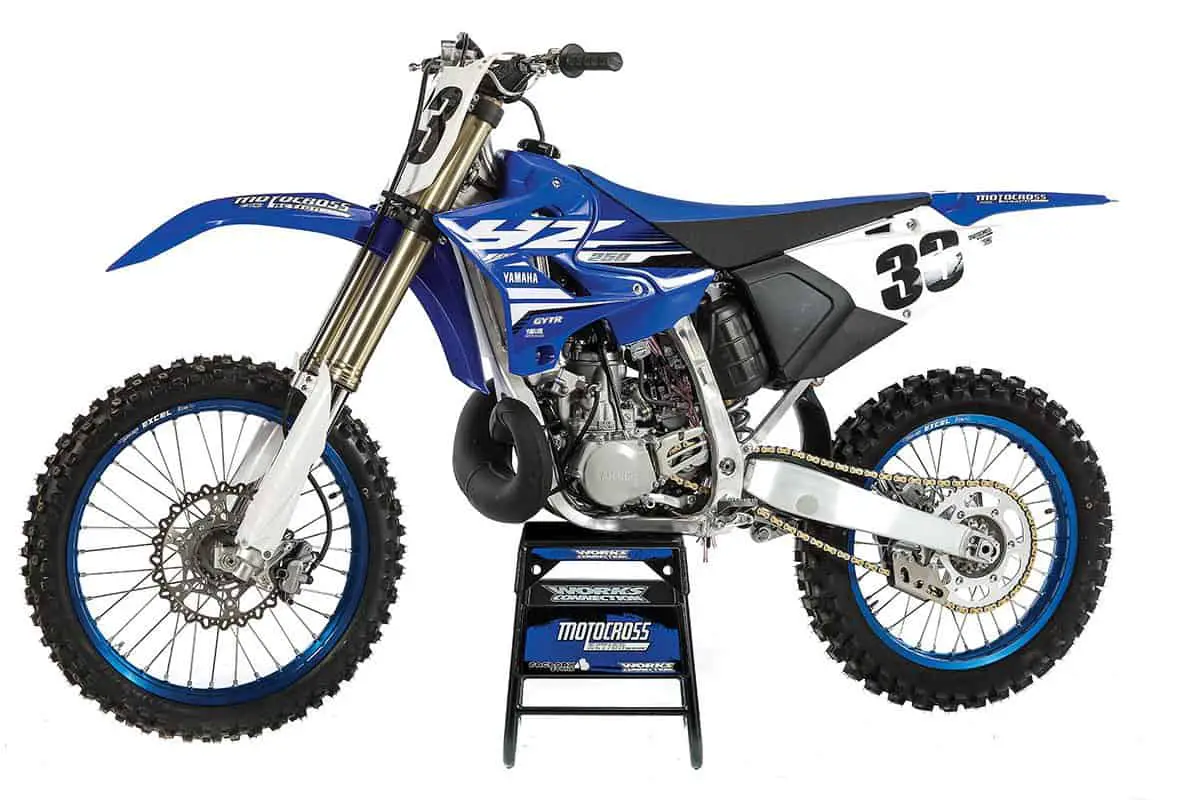 It could use a stronger engine, more accurate frame, a diet and some loving care, but most MXA test riders love this bike as it sits. What updates did it get for 2018? Are you blind? The blue rims of course.
It could use a stronger engine, more accurate frame, a diet and some loving care, but most MXA test riders love this bike as it sits. What updates did it get for 2018? Are you blind? The blue rims of course.
Q: HOW DO THE 2018 YZ250 AND KTM 250SX COMPARE IN THE POWER DEPARTMENT?
A: You might be surprised to learn that the peak horsepower difference between the Yamaha YZ250 and KTM 250SX is not that great. The KTM makes 47.20 horsepower, while the Yamaha YZ250 pumps out 46.08. But, it should be noted that the YZ250 hits its peak at a high 8800 rpm, while the 250SX hits its apex at 8200 rpm. When you add in the KTM’s 3 foot-pounds more torque at 500 rpm lower in the rpm range, the KTM engine is super responsive and effective.
Remembering that peak horsepower is very similar, you might think that these two engines are also similar across the board. Nothing could be further from the truth. At 6000 rpm, the KTM makes 2 horses more than the Yamaha. At 7000 rpm, the KTM makes 4 horses more, and at 8000 rpm the KTM makes 2.6 horsepower more. Once the KTM 250SX peaks at 8200 rpm, it falls off quickly, and by the time the orange bike gets to the Yamaha’s 8800 rpm peak, the YZ250 is actually 4.7 horsepower to the good.
It is this over-rev that makes the 2018 YZ250 competitive with the 2018 250SX. At roll-on and through the midrange, the KTM gaps the Yamaha by a big margin, which means that the YZ250 rider has to close the gap at the end of the straights. It makes for an interesting match-up—sheer grunt versus over-rev.
 Compared to the KTM 250SX, the YZ250 gives up 4 hp in the middle and 3 foot-pounds of torque, but makes it back on overrev.
Compared to the KTM 250SX, the YZ250 gives up 4 hp in the middle and 3 foot-pounds of torque, but makes it back on overrev.
Q: IS THE 2018 YAMAHA YZ250 BETTER THAN THE 2018 KTM 250SX?
A: No. The 2018 KTM 250SX weighs 7 pounds less, has incredible brakes, features a bulletproof hydraulic clutch, handles better, doesn’t vibrate (thanks to a counter-balancer), has a no-tools airbox (with a plug-in air filter), makes more power in the meat of the powerband, and is outfitted with Dunlop MX3S tires (instead of the YZ250’s old-school MX52s). In a direct comparison, the YZ250 weighs more, has weaker brakes, old-fashioned handling, considerable vibration and can’t hide its 12-year-old genes; however, what is amazing is that for a bike that was designed when “Malcolm in the Middle” was a hit TV show, the YZ250 is still a very good bike. Maybe it is not the purpose-built race bike that the KTM 250SX is, but it is a workman-like, all-around bike.
Most MXA test riders love to ride the YZ250 two-stroke because it is “good enough.” It has good-enough power to be competitive in the right hands, good-enough handling to get around the track without incident (something that not every 2018 450 can claim), and good-enough ergos for Vet racers and professional practice riders. Amazingly, it is good enough that the majority of MXA test riders said that they believe that the Yamaha YZ250 is the most iconic motocross bike of the last 20 years.
 Without these forks, the YZ250 would have joined the CR250, KX250 and RM250 in the junkyard long ago.
Without these forks, the YZ250 would have joined the CR250, KX250 and RM250 in the junkyard long ago.
Q: WHAT’S SO ICONIC ABOUT THE YAMAHA YZ250?
A: Make no mistake about it; motocross bikes are expendable, throw-away, obsolescence-prone machines that see their time in the sun come and go very quickly. To be iconic, a bike must have a purity of purpose that allows it to transcend time. It not only has to have been great when it was new, but it still has to be considered great a decade later. The acclaim must be almost universal, beyond reproach and, most difficult of all, virtuous. Think about that for a second. How many virtuous bikes can you think of? We aren’t talking about the latest and greatest models of 2018, as good as they are, for they have yet to stand the test of time. When polled, the MXA wrecking crew could only agree on two motocross bikes from the last 10 years that could be considered iconic, virtuous and beyond reproach—the 2008 Honda CRF450 and any year Yamaha YZ250 (starting in 2006 because of the introduction of Kayaba SSS suspension).
And while we rate the 2008 CRF450 as a watershed bike, we probably wouldn’t line up to buy one today. But, we would gladly put our money down on a Yamaha YZ250.
Q: WHAT DO WE THINK ABOUT THE YZ250 CHASSIS?
A: To sum it up in one word, outdated. Don’t get us wrong; it does many things well and some things great, but the front end is shaky at speed and there has always been a touch of understeer in the aging frame. The KTM and Husky don’t have any handling issues; in fact, they are almost flawless. Luckily, you can Band-Aid the YZ250’s handling ailments by lowering the sag to 105mm, raising the forks into the clamps another 5mm, tightening up on the steering stem (to make a poor man’s steering damper) and throwing away the front Dunlop MX52 for a better front sneaker (like an MX3S).
 We add one tooth to the rear sprocket to help the YZ250 get to third gear sooner. Otherwise it lays down on exit.
We add one tooth to the rear sprocket to help the YZ250 get to third gear sooner. Otherwise it lays down on exit.
Q: HOW GOOD IS THE KAYABA SSS SUSPENSION?
A: The Kayaba SSS components were 10 years ahead of the competition when they were introduced back in 2006. Kayaba SSS has held the mantel of the best showroom stock suspension for all this time. The SSS forks have superb bottoming resistance and very well-thought-out damping. They are among the best forks on the showroom floor today, but they can be improved. In stock trim, the Kayabas are busy and ride low in the stroke. Plus, the shock will blow through and wallow with a fast rider in the saddle.
And while the new breed of rehashed coil-spring forks on the 2018 Suzuki RM-Z450, Honda CRF450 or the Kawasaki KX250F are not much of a threat to SSS dominance, that can’t be said for the Showa forks on the 2018 Honda CRF250 or the WP AER air forks on the Huskys and KTMs. They have caught up.
 Yamaha doesn’t need more top-end power, but it does need a boost of midrange to keep the KTM 250SX in sight.
Yamaha doesn’t need more top-end power, but it does need a boost of midrange to keep the KTM 250SX in sight.
Q: WHAT DID WE HATE?
A: The hate list:
(1) Chassis. The YZ250’s chassis is old and outdated. It was always a middle-of-the-road handler and still is. It understeers and twitches unexpectedly at speed. Ultimately, Yamaha needs to dump some R&D money into its two-stroke department.
(2) Engine. Love the powerband, but its Austrian competition will leave it in the dust off the start, up hills or in sand.
(3) Front tire. Dunlop’s MX52 front tire makes the YZ250 front end feel worse than it actually is. Invest in a better front tire to get the full potential out of the YZ250’s aluminum frame.
(4) Gear ratios. The upshift from second to third needs help. Luckily, once in third gear, no matter how far you rev the engine, it will never fall on its face. In a perfect world, we would like to see Yamaha move third gear closer to second (like Yamaha did on the YZ250X offroad version) and keep the same powerband.
Q: WHAT DID WE LIKE?
A: The like list:
(1) Powerband. We think that more midrange horsepower would be helpful, but then so would more power everywhere. We love the YZ250’s power curve but need more oomph in the middle.
(2) Suspension. The Kayaba SSS fork and shock are raceable right off the showroom floor—even though they are 12 years old.
(3) Maintenance. It doesn’t take a mechanical genius to keep a YZ250 running. Changing a top end is cheap and easy compared to a four-stroke, made all the more affordable by the fact that you can do it yourself.
(4) Bulletproof. The YZ250 is like the Energizer Bunny—it just keeps going and going.
Q: WHAT DO WE REALLY THINK?
A: We love this bike, not because it is the best 250 two-stroke on the showroom floors, but because it has been refined over a 12-year development period. Most of the bugs have been ironed out. It is a good, solid investment, proven by the big dollars that used YZ250s bring on the open market. We wish Yamaha had taken the reins and updated the YZ250 to help it reach its full potential. It didn’t. Yamaha stopped serious R&D 12 years ago. How great could it have been if Yamaha had cared.
All the wishful thinking aside, the MXA wrecking crew applauds Yamaha for being the last Japanese manufacturer to build two-stroke motocross bikes—but we would prefer that Yamaha quit going through the motions and start playing the game as well as they did back in 2006.
MXA’S 2018 YAMAHA YZ250 SETUP SPECS
This is how we set up our 2018 Yamaha YZ250 for racing. We offer it as a guide to help you find your own sweet spot.
KAYABA SSS FORK SETTINGS
Yamaha did not give the 2018 YZ125 or YZ250 the latest version of its Kayaba SSS forks. They still come with the version with the smaller cartridge rod. No sweat. These year-old forks are perfect on the YZ250’s chassis. For hardcore racing, we ran this setup on the 2018 Yamaha YZ250 (stock clickers are in parentheses):
Spring rate: 0.43 kg/mm
Compression: 13 clicks out
Rebound: 14 clicks out
Fork-leg height: 10mm up (5mm up)
Notes: These are awesome forks, made all the more terrific by the light feel and snappy input of the two-stroke engine. Obviously, if you are fast or fat, you might want to go stiffer on the fork springs. Typically, however, fast riders can dial in more compression (and use the crossover effect of rebound damping to get the stock fork springs to work).
KAYABA SSS SHOCK SETTINGS
For hardcore racing, we ran this setup on the 2018 Yamaha YZ250 (stock clickers are in parentheses):
Spring rate: 4.7 kg/mm
Race sag: 105mm
Hi-compression: 1-3/4 turns out (1-1/2 turns out
Lo-compression: 8 clicks out (13 clicks out)
Rebound: 8 clicks out (12 clicks out)
Notes: The YZ250 shock comes with a jumbo-sized 18mm shock shaft, Kashima-coated internals and SSS damping. AMA National-speed riders and heavyweight contenders will need to move up to a 5.0 kg/mm spring.
YAMAHA YZ250 JETTING
Here are MXA’s recommended jetting specs (when changed, stock specs are in parentheses):
Main: 178
Pilot: 50
Needle: N3EW
Clip: 2nd from top
Air screw: 1 turn
Notes: The 2018 YZ250 jetting is on the edge, albeit the good side of the edge. If you hop-up the YZ250 or add an aftermarket exhaust pipe, you will need to go to a bigger 180 main or add VP C-12 fuel in a ratio to your pump gas. Other than that, the YZ250 jetting is basic, simple and effective. The air screw is very sensitive from 1/2 turn to 1 turn out.


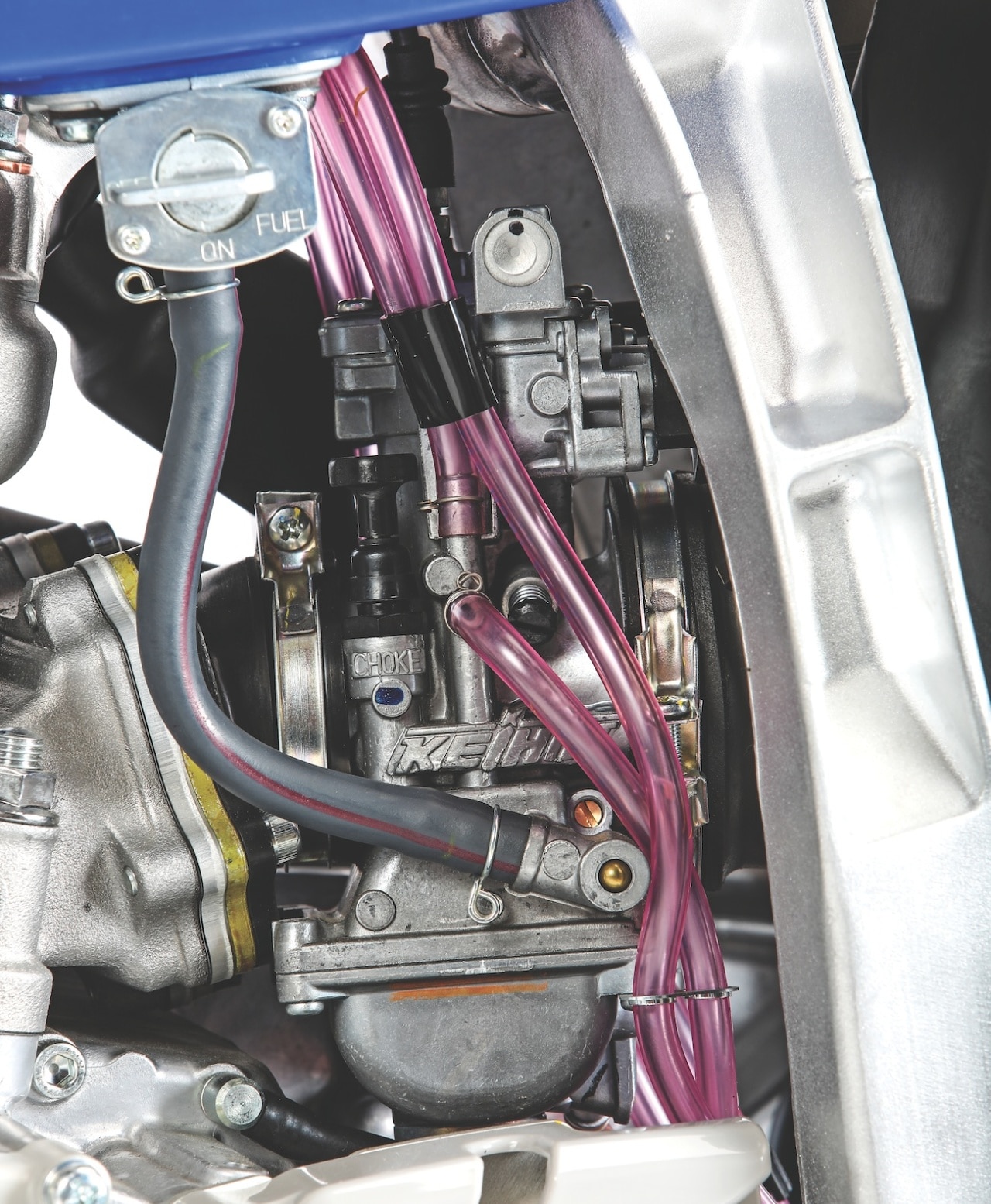

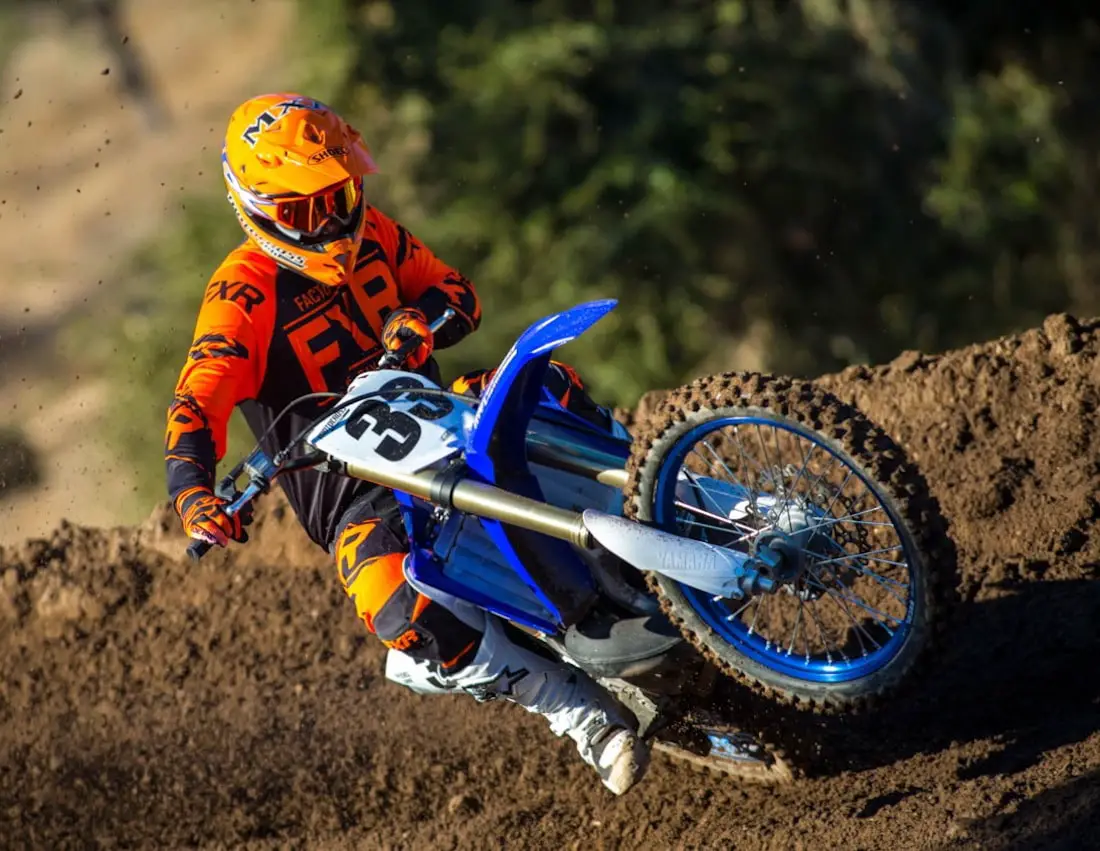

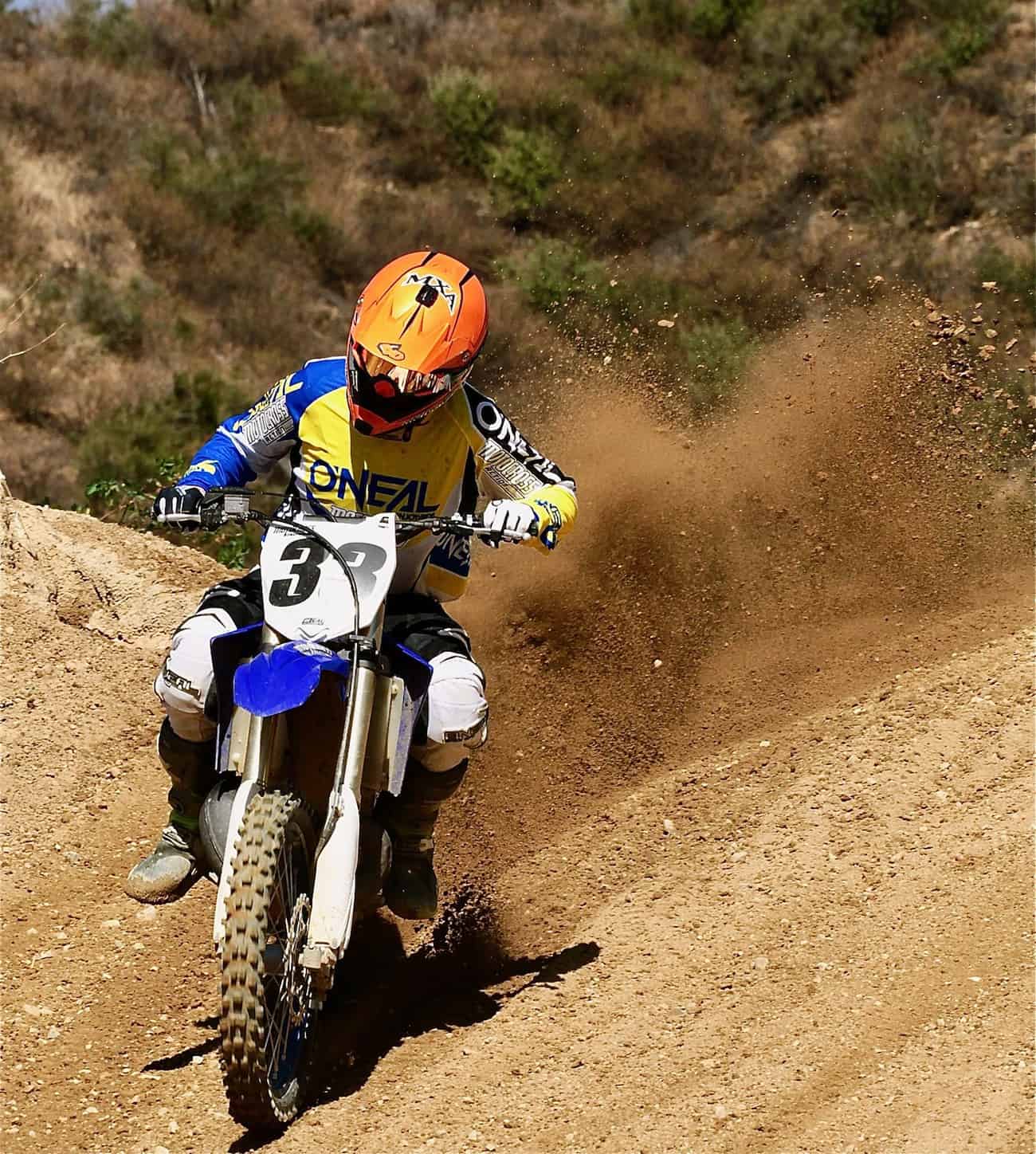
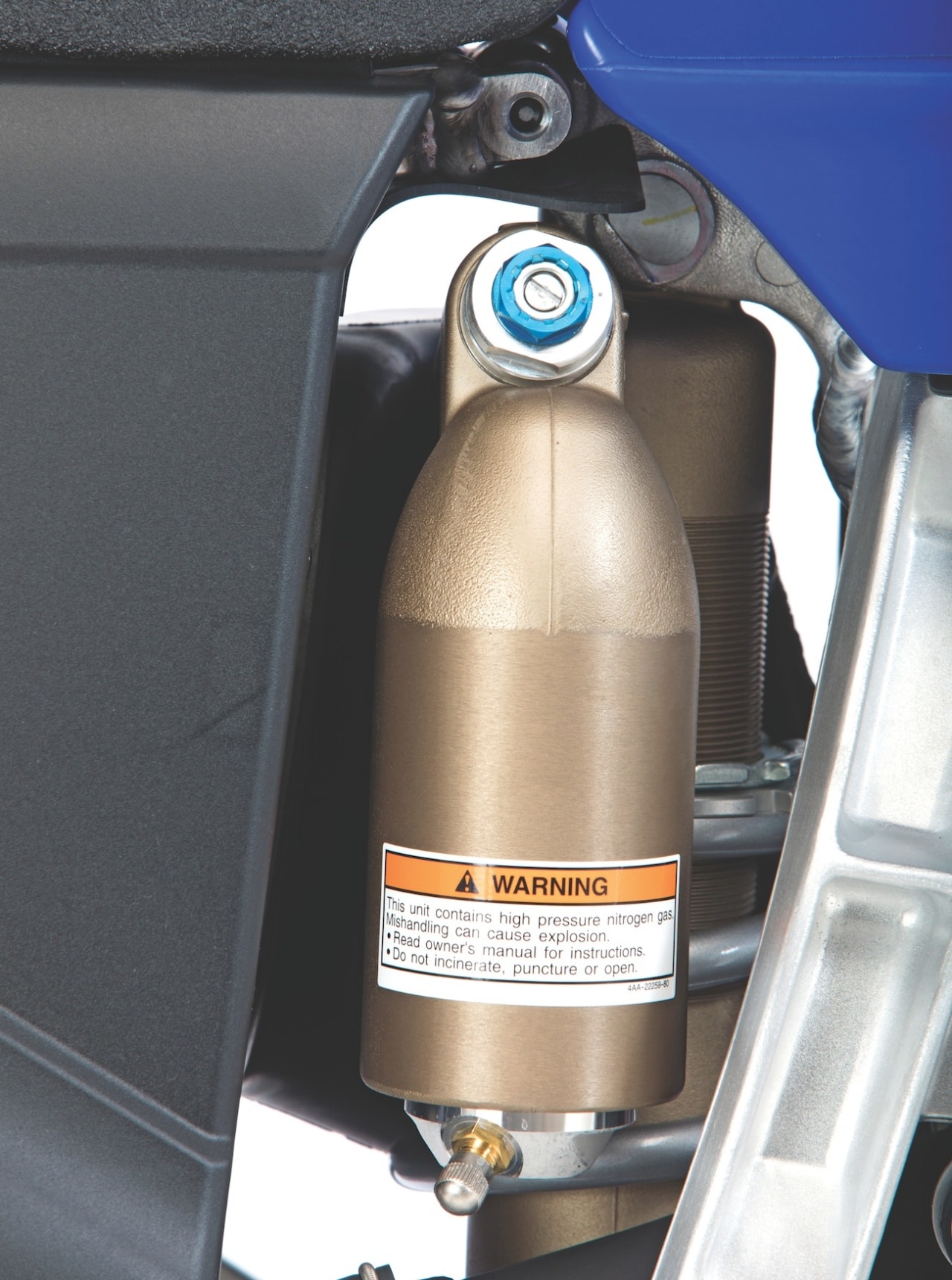


Comments are closed.